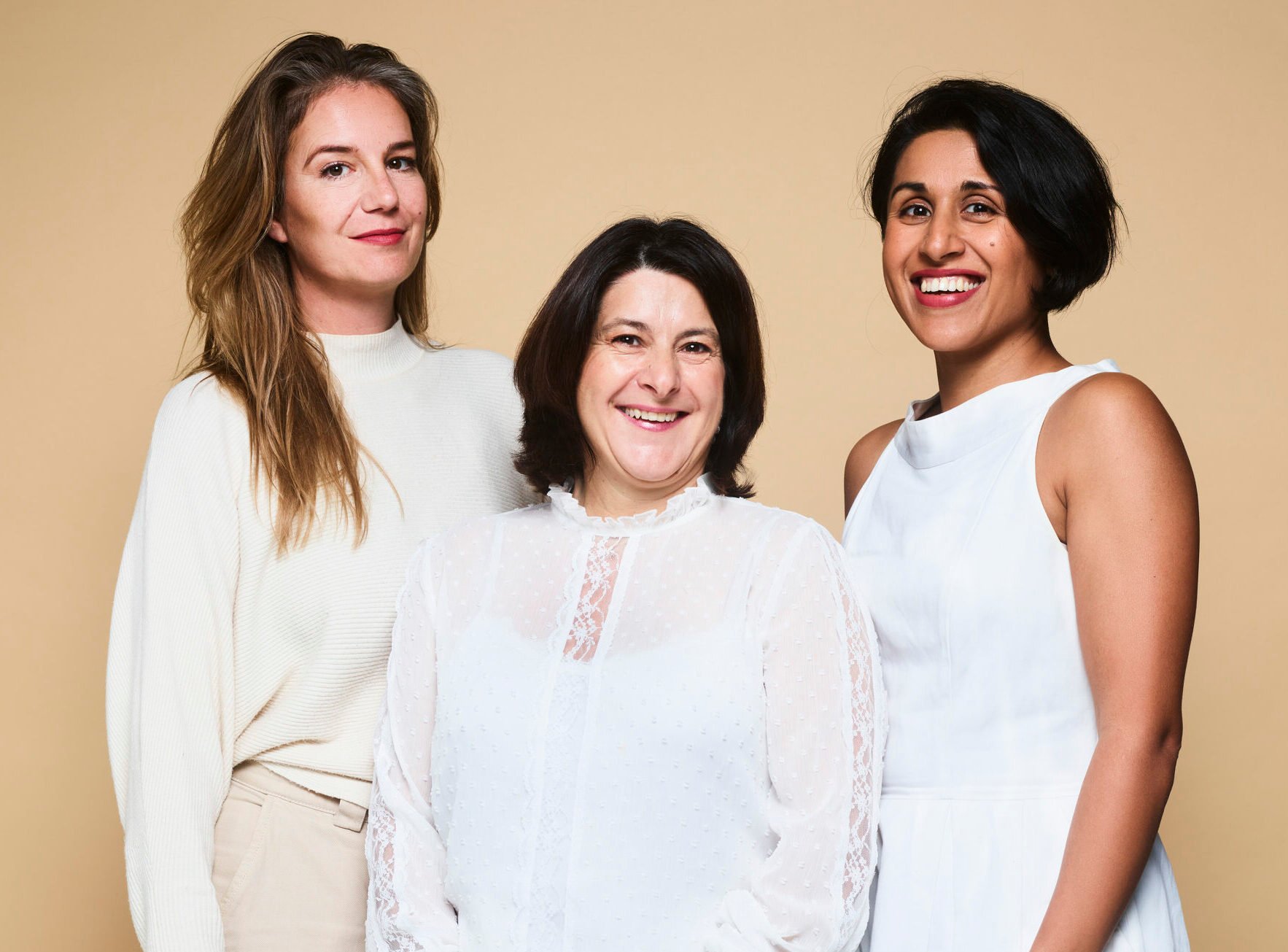
About swap-studio
- Founders: Nilofer Christensen and Kathryn Saducas
- Founded in: February 2020, Amsterdam
- Employees: 6
- Money raised: 200.,000 euros
- Ultimate goal: Work towards 1 in 5 pieces of clothing are swapped via circular business models by 2030
How many pieces of clothing do you have in your wardrobe that you no longer wear? An older study showed that the Dutch have an average of 173 items of clothing, 50 of which are never worn. Each year, we throw away 41 of them and buy 46 more. Together with clothing manufacturers and clothing brands, we have created a staggeringly high mountain of discarded and deadstock. Bad for our wallets, even worse for the environment and nature. Nilofer Christensen wants to offer a sustainable solution for overconsumption through the Amsterdam-based swap-studio. People can upload photos of their things that they do not use anymore, so that someone else can reuse them. Also companies with dead stock can share their products here. Christensen talks to us about her ideology in this episode of start-up of the day.
What is swap-studio?
“It is a peer-to-peer marketplace where people can exchange things using our own currency, which we have call kudos. The platform uses blockchain, except in a different way than people are used to. We determine the environmental impact of each transaction and turn it into a token, which becomes the NFT. We do this by looking at how much water and how much nitrogen emissions are saved with each swap. This is done to prevent greenwashing. We are able to make the ecological footprint measurable, transparent and it is verified by our technology. This is also our unique selling point. So by swapping, users can see how much they have saved by not buying anything new.”
“Users are given an account where they can earn kudos. They can then exchange these kudos for an item of clothing. As a new user, you get the first item for free. This can be an item from a private individual who has placed it on the site, but also from a company that was unable to sell a previous collection, or have items that are slightly damaged. For each transaction, the user pays a small fee of 4.95 euros to us to cover the costs incurred by the company. Many people dislike the idea of second-hand shops or thrift shops. But with an online platform like ours, they are willing to buy second-hand things. Companies can also opt to set up their own platform with our help. They can then put their own products on it. For instance, they could work with a loyalty programme. The points that they give away with each purchase, the customer can then use to buy a second-hand item from the brand, or a deadstock item, instead of the usual discount that people now save themselves.”
So, I can only get free items by becoming a member of the community? Won’t this be abused by people who fish out the expensive items and then post them on Marktplaats or Vinted?
“We have been active for eighteen months now. We have not seen that happen so far. If it does happen, we don’t really mind. Our goal is to get people to throw away less and allow others to reuse them. If you don’t throw something away, but let someone reuse it, we don’t mind if it is sold on again afterwards. Even if we wanted to, there is no way to stop that. The person who put something on swap-studio no longer needed it, and got new kudos for choosing something that makes them happy. We know that our target group wants to do something good and live more consciously. They support the initiative and the platform. With swap-studio, we also want to try to narrow the gap between rich and poor. Everyone deserves to have nice things, regardless of what’s in their wallets. Word of mouth referrals, because people have read about us, also helps with that.”
So what are some of the real challenges you face?
“The swap concept itself was already a challenge. There were people who put an item on swap-studio and on Vinted. Then they sold it for a small amount on Vinted. This meant that it was not at all available to the people who wanted to buy it through swap-studio. We have all gotten so used to the use of money that many people had to get used to the concept of swapping. Once they get the hang of it, they like it. There are some people who swap an item every few days now.”
“The greatest challenge was getting people on board to fund this concept. Being a woman in the tech field is difficult. Only two per cent of investments in Europe go to women. You have to keep on fighting to prove yourself. Which is why our search for new investors and partners is continuing. So much happens before clothing is discarded, and also when clothing is finally ready to be recycled. It would be great if we could work together with other companies to make the lifecycle of an item more sustainable. We make sure that an item is used to the fullest, while there is still plenty of room for improving sustainability in other phases. With an eye to the future: the government is looking at new legislation to give producers more responsibility over their products. Currently, product responsibility, i.e. how it is recycled or destroyed, lies with the user. The government wants to change that.”

You have now been up and running for eighteen months. What were the first reactions? Do they offer much hope for the future?
“Yes, there is lots of interest in the platform. We didn’t think so when we first started. We created a simple website where people who were interested could leave their email address. We were expecting to get maybe twenty registrations. That turned out to be a hundred and sixty in three days! Our user numbers are growing at an average of seven per cent per week. At the moment, we have two thousand active users. Most users also do not use shipping companies and pick up their products at one of the three pick-up points we have here in Amsterdam. People are responding enthusiastically. They get beautiful items, while also doing something good for the environment. I am also an avid user of our platform. I have already made 132 purchases. I have already swapped something 132 times. I have saved 3174 euros, 45,000 litres of water and almost 980 kilos of CO2 that way.”
“In the future, I would ideally like to help more than a hundred brands build their own second-hand platform. Let us become a major player in getting items reused. The knowledge we are gradually accumulating is very valuable in contributing to the 2030 climate targets. Something has to change now, because the McKinsey report is depressing. If we do not change our consumption behaviour now, we will not achieve them. The fashion industry is a major polluter. And we are going to make it more sustainable.”


